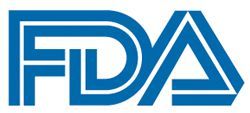News
Article
FDA Approval Sought for UGN-102 in Low-Grade, Intermediate-Risk NMIBC
A new drug application has been submitted to the FDA for UGN-102 inlow-grade, intermediate-risk non–muscle-invasive bladder cancer.
FDA

A new drug application (NDA) has been submitted to the FDA seeking the approval of mitomycin for intravesical solution (UGN-102) for the treatment of patients with low-grade, intermediate-risk non–muscle-invasive bladder cancer (NMIBC).1
UroGen, the developer of UGN-102, expects a decision regarding potential approval from the FDA in early 2025, provided the NDA is accepted for filing by the regulatory agency and is granted priority review.
UGN-102 uses UroGen’s RTGel technology, which is a sustained-release, hydrogel-based formulation designed to facilitate longer exposure of mitomycin to bladder tissue. UGN-102 is administered to patients using a standard catheter in an outpatient setting.
“The completion of the NDA submission for UGN-102 marks a crucial milestone for UroGen and underscores our dedication to advancing this groundbreaking treatment for patients with low-grade, intermediate-risk NMIBC,” Liz Barrett, President and Chief Executive Officer of UroGen, stated in a news release. “By providing a viable alternative to repeated surgeries, if approved, UGN-102 may offer patients quality-of-life benefits and clinically meaningful recurrence-free intervals. The high recurrence rates associated with low-grade, intermediate-risk NMIBC make the need for innovative therapies like UGN-102 urgent. UGN-102 could become a valuable new option for managing this challenging disease.”
The NDA is supported by findings from the UGN-102 clinical program, including the phase 3 ENVISION trial (NCT05243550). In ENVISION, patients with low-grade, intermediate-risk NMIBC who received intravesical UGN-102 achieved a 79.6% (95% CI, 73.9%-84.5%) complete response (CR) rate at 3 months after the first instillation.1,2 The estimated 12-month duration of response (DOR) rate with the agent was 82.3% (95% CI, 75.9%-87.1%) among patients with a CR at 3 months (n = 108). The 15- (n = 43) and 18-month (n = 9) estimated DOR rates in patients who achieved a CR at 3 months were both 80.9% (95% CI, 73.9%-86.2%).2
The safety profile of UGN-102 in ENVISION was similar to that seen in other studies with the agent. The most common treatment-emergent adverse effects (TEAEs) observed in ENVISION were hematuria, dysuria, pollakiuria, urinary tract infection, urinary retention, and fatigue. Most TEAEs were mild to moderate and resolved or were resolving.
The single-arm, multicenter, international ENVISION trial completed its target enrollment with approximately 240 patients across 56 sites. Eligible patients needed to have low-grade NMIBC histologically confirmed by cold cup biopsy at screening or within 8 weeks before screening.3
Patients needed to have a history of a previous episode of low-grade NMIBC requiring treatment with transurethral resection of bladder tumors; negative voiding cytology for high-grade disease within 8 weeks before screening; and an anticipated life expectancy of at least the trial duration. Patients also needed to have intermediate-risk disease, defined as having 1 or 2 of the following:
- The presence of multiple tumors
- A solitary tumor of at least 3 cm
- Early or frequent recurrence
Patients were excluded if they had received Bacillus Calmette–Guérin for urothelial carcinoma within the previous year; had a history of high-grade bladder cancer in the past 2 years; had past or current muscle-invasive bladder cancer or metastatic urothelial carcinoma; or had a history of neurogenic bladder, active urinary retention, or any other condition that would prohibit normal voiding.
Patients received 6 once-weekly UGN-102 instillations. The primary end point was CR rate at 3 months after the first instillation. The key secondary end point was durability over time in patients who had a CR at the 3-month assessment.
References
- UroGen submits completed UGN-102 NDA seeking approval as the first FDA-approved treatment for low-grade intermendiate-risk non-muscle invasive bladder cancer. News release. UroGen Pharma Ltd. August 14, 2024. Accessed August 14, 2024. https://investors.urogen.com/news-releases/news-release-details/urogen-submits-completed-ugn-102-nda-seeking-approval-first-fda
- UroGen announces unprecedented 82.3% duration of response at 12 months in the ENVISION trial investigating UGN-102 as potentially the first FDA-approved non-surgical treatment for LG-IR-NMIBC. News release. UroGen Pharma Ltd. June 13, 2024. Accessed August 14, 2024. https://investors.urogen.com/news-releases/news-release-details/urogen-announces-unprecedented-823-duration-response-12-months
- A phase 3 single-arm study of UGN-102 for treatment of low grade intermediate risk non-muscle-invasive bladder cancer (ENVISION). ClinicalTrials.gov. Updated July 12, 2024. Accessed August 14, 2024. https://clinicaltrials.gov/study/NCT05243550







